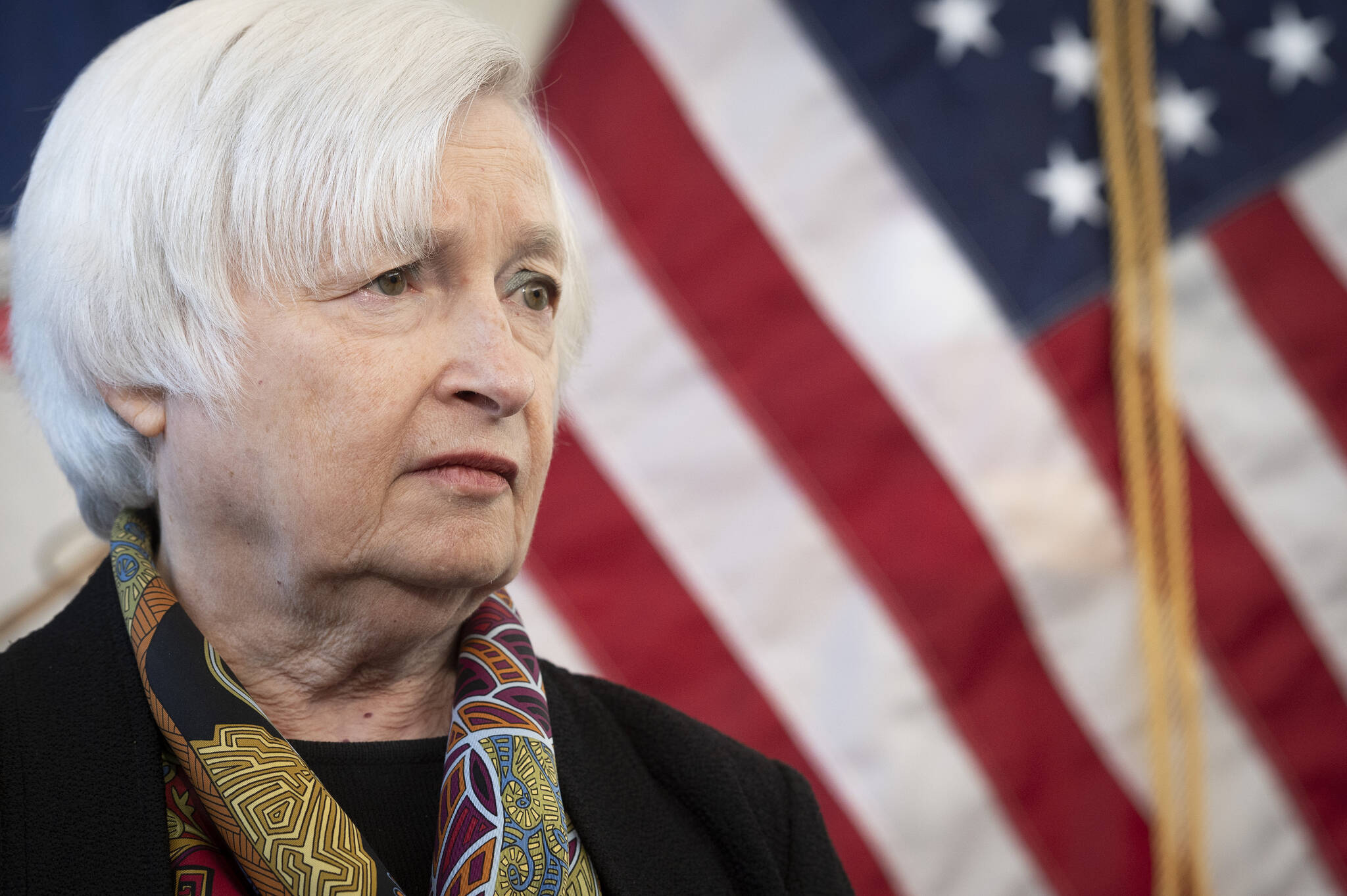WASHINGTON — On the brink of hitting the nation’s legal borrowing limit on Thursday, the government is resorting to “extraordinary measures” to avoid a default.
Sounds ominous, right?
But — take a breath — the phrase technically refers to a bunch of accounting workarounds. Yes, accounting.
Because the debt cap limits the issuance of government bonds — a way the U.S. borrows money — these workarounds shift money among accounts and should keep the government open through at least June, according to a letter last week by Treasury Secretary Janet Yellen.
In theory, President Joe Biden and Congress are supposed to use that additional time to work out an agreement to raise the nation’s legal $31.38 trillion debt ceiling. These talks often grow heated and go down to the wire, with major economic damage in the balance. But there have been roughly 80 deals to raise or suspend the borrowing cap since the 1960s.
What could be worrisome is not the existence of extraordinary measures, but what happens if they are exhausted this summer without a deal in place. Economists have warned that could lead to a global financial crisis.
So far, House Speaker Kevin McCarthy and Biden are playing what could be a dangerous game of chicken with the world’s largest economy in the middle.
Some questions and answers on the situation:
What are extraordinary measures?
Yellen’s Friday letter listed two measures that will begin this month in order to prevent the government from defaulting.
First, the government will temporarily suspend payments to the retirement, disability and health benefit funds for federal employees. Second, it will suspend the reinvestment of maturing government bonds in the retirement savings accounts of government workers.
By suspending the payments, the government can reduce the amount of outstanding debt. That enables the Treasury Department to keep financing government operations, according to Yellen’s letter.
What allows Treasury to use these measures?
No dispute there. Congress has given Treasury the authority to do so.
Because these are retirement accounts, no one is harmed by the government equivalent of an IOU. The funds are made whole after a debt ceiling increase or suspension becomes law. It’s not necessarily the measures that can harm the economy but rather the doubts among consumers and businesses about whether lawmakers will increase the borrowing cap.
How big are these retirement funds?
There were $986 billion in net assets of the civil service and federal employees retirement funds at he end of fiscal 2021, according to a report by the Office of Personnel Management. The required government contributions to the funds are large enough to rely on these extraordinary measures for roughly five months.
How common is this?
“Treasury Secretaries in every Administration over recent decades have used these extraordinary measures when necessary,” Yellen wrote in her letter.
The measures were first deployed in 1985 and have been used at least 16 times since then, according to the Committee for a Responsible Federal Budget, a fiscal watchdog.
Why do we have a debt limit?
Before World War I, Congress needed to approve each bond issuance. The debt limit was created as a workaround to finance the war effort without needing a constant series of votes.
Since then, a tool created to make it easier for the government to function has become a source of dysfunction, stoking partisan warfare and creating economic risk as the debt has increased in size over the past 20 years.
How risky is the brinksmanship?
It looks alarming — and it’s not clear how Biden, McCarthy and the Democratic Senate will find common ground. A default could cause millions of job losses, a deep recession that would reverberate globally and, ironically, higher interest rates that would make it harder to manage the federal debt.
McCarthy said Tuesday that talks should begin immediately on the potential spending cuts that Republicans are seeking in exchange for raising the debt limit, even though the Biden administration has equated that demand to holding the U.S. economy hostage.
“Who wants to put the nation in some type of threat at the last minute of the debt ceiling?” McCarthy said. “Nobody wants to do that. That’s why we’re asking, ‘Let’s change our behavior now. Let’s sit down.”
The Biden administration wants the borrowing cap increased without any preconditions. White House press secretary Karine Jean-Pierre on Tuesday ruled out holding talks with McCarthy.
Do debt limit showdowns help reduce government debt?
Not so much.
The Congressional Budget Office estimates that annual budget deficits will grow from roughly $1 trillion to more than $2 trillion over the next 10 years.
The imbalance over the coming years increasingly reflects government expenses for programs such as Medicare and Social Security that are outstripping tax revenue. That suggests the government would need severe cuts to spending, major tax hikes or some combination of those options.
In 2011 when Barack Obama was president and Biden was vice president, there was a bipartisan deal to raise the debt limit by $900 billion in return for $917 billion worth of automatic spending cuts over 10 years.
But the debt reduction never fully materialized.
After Donald Trump became president in 2017, Republican lawmakers fueled further debt increases by passing deficit-financed tax cuts. Debt accelerated even more with the start of the coronavirus pandemic in 2020, which caused massive government borrowing in order to pull the U.S. out of a deep recession.
The CBO last year estimated that the U.S. debt would exceed $40 trillion in 2032.
___
AP writer Kevin Freking contributed to this report.

